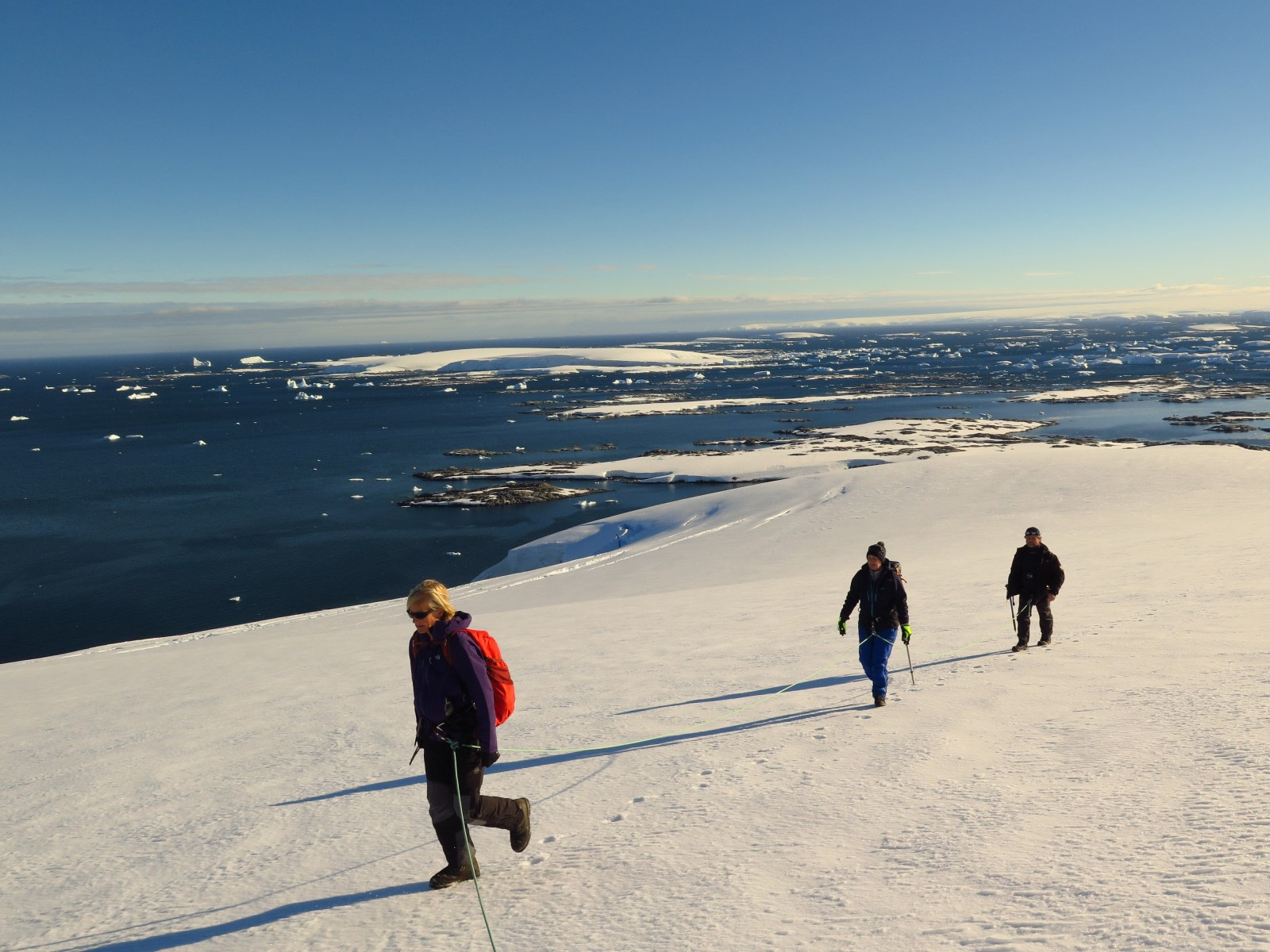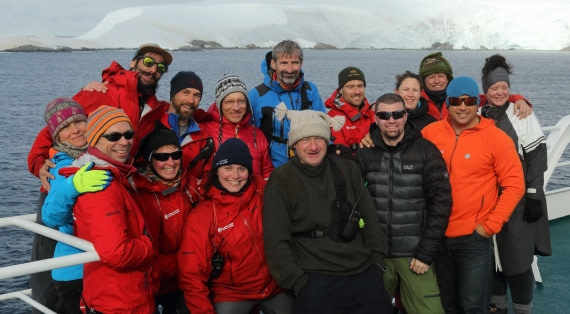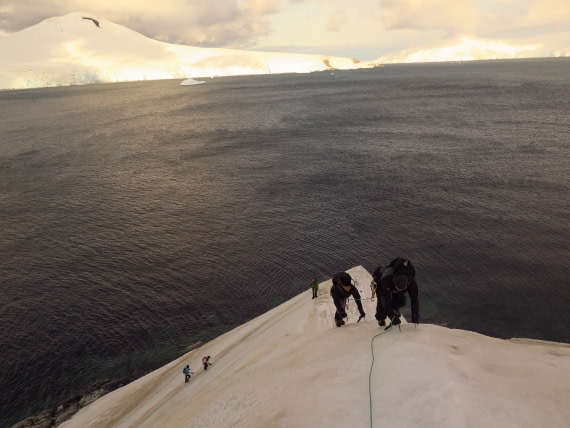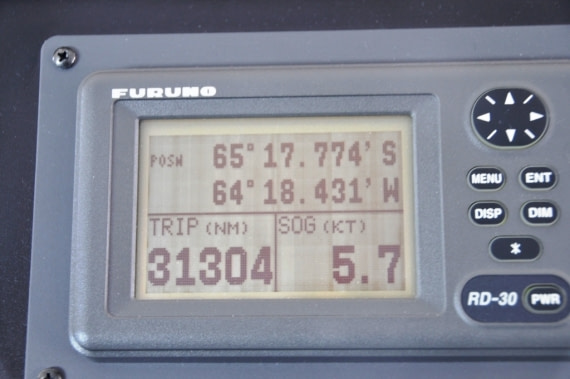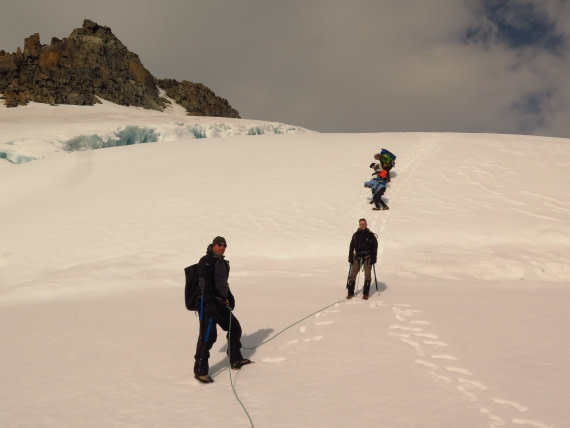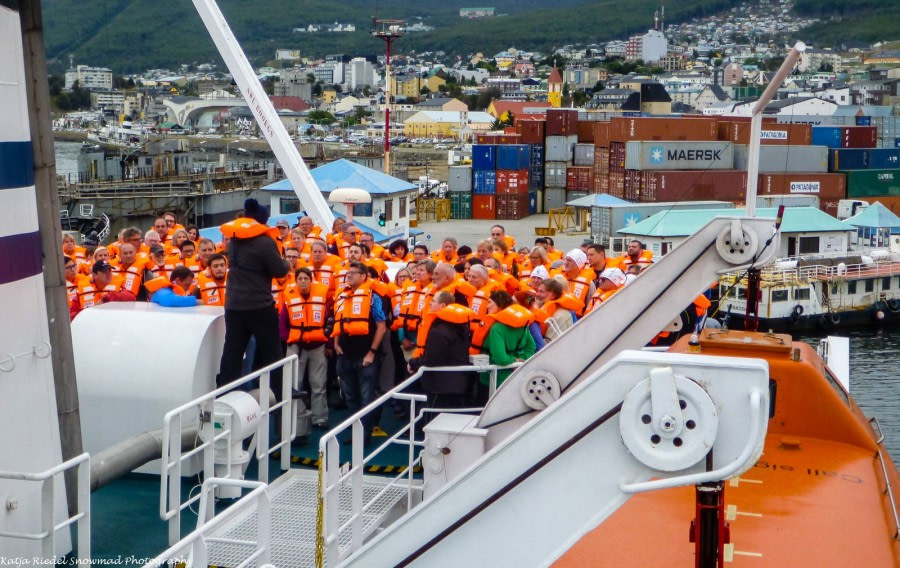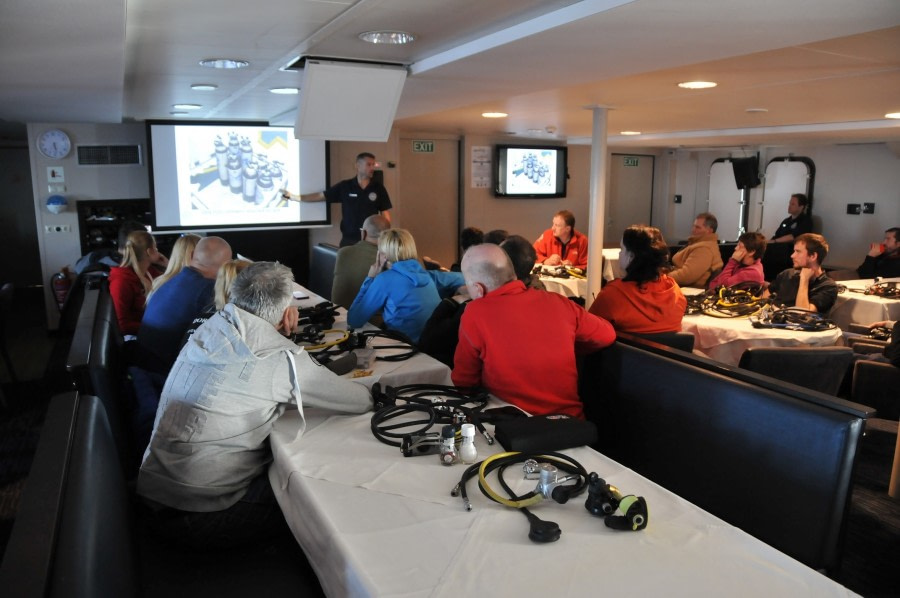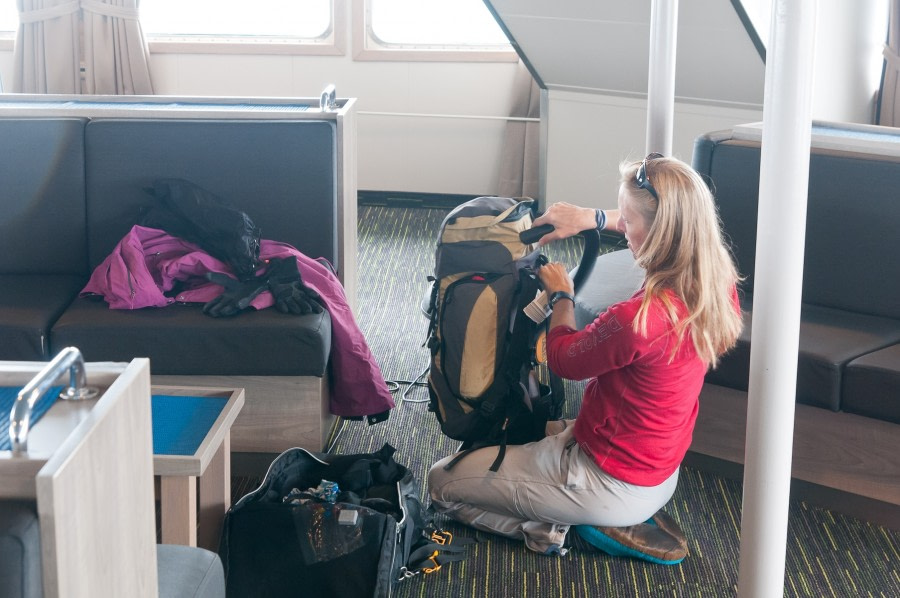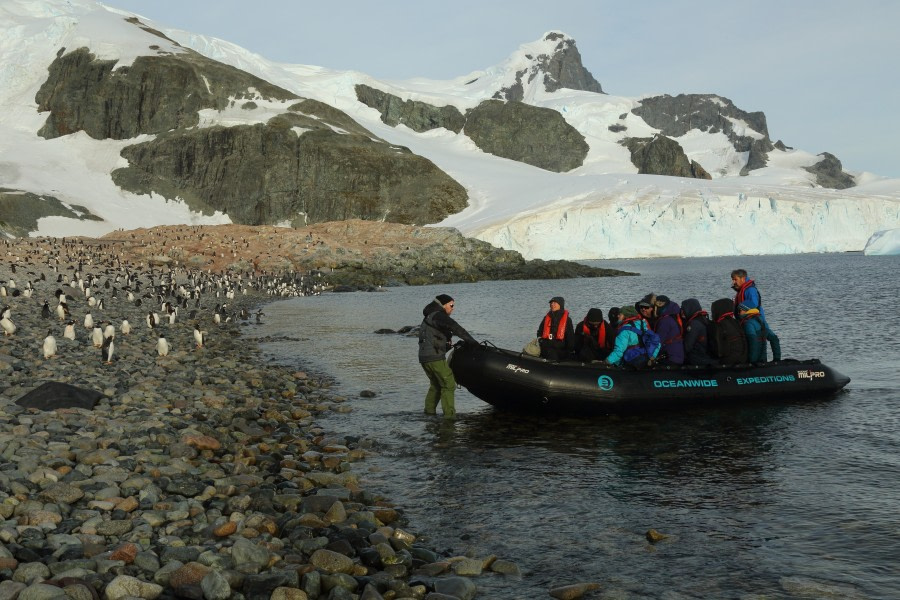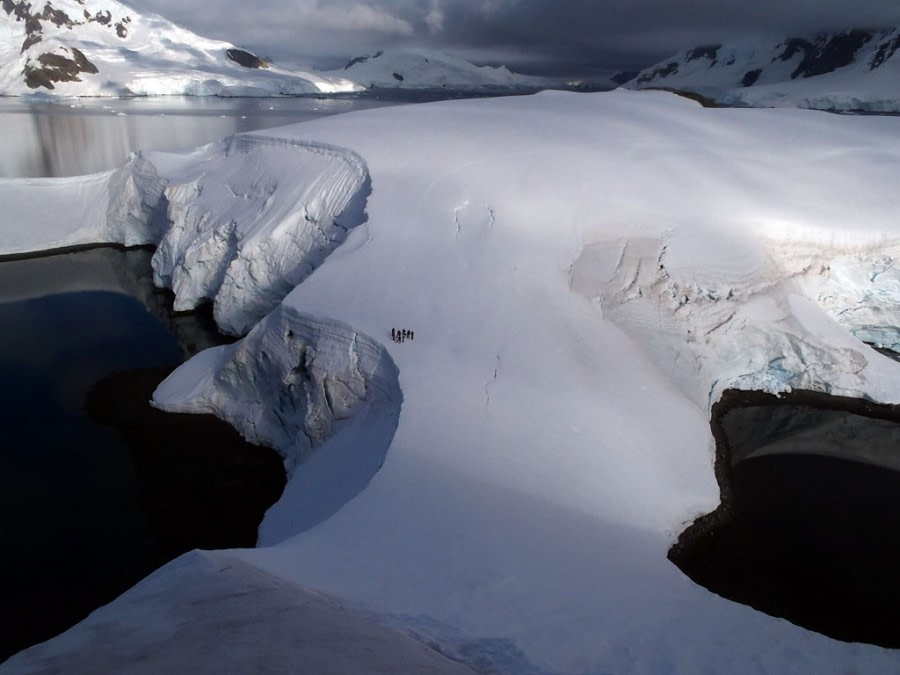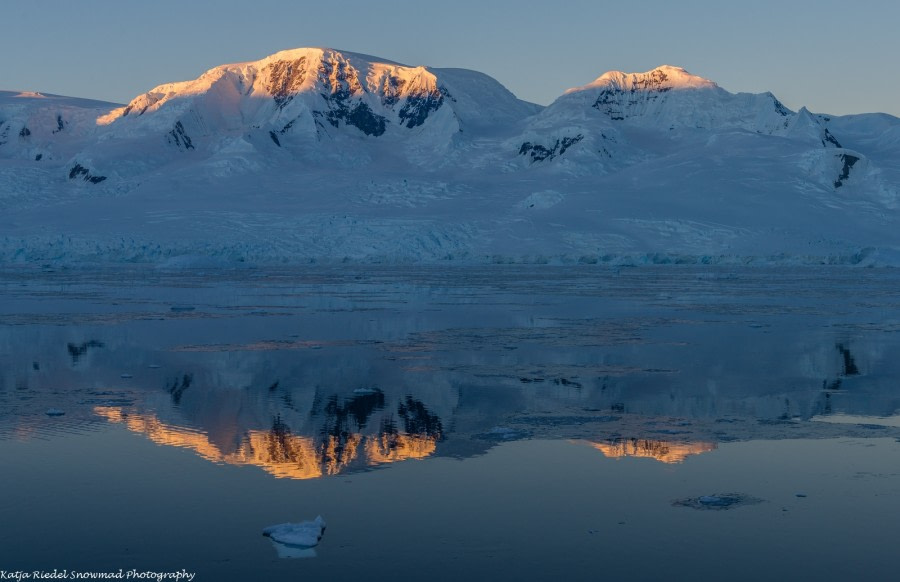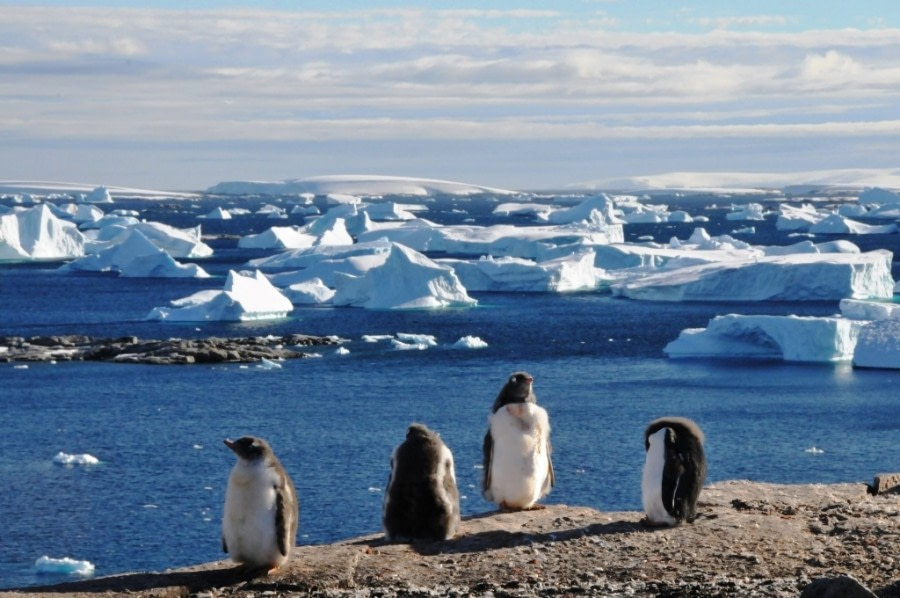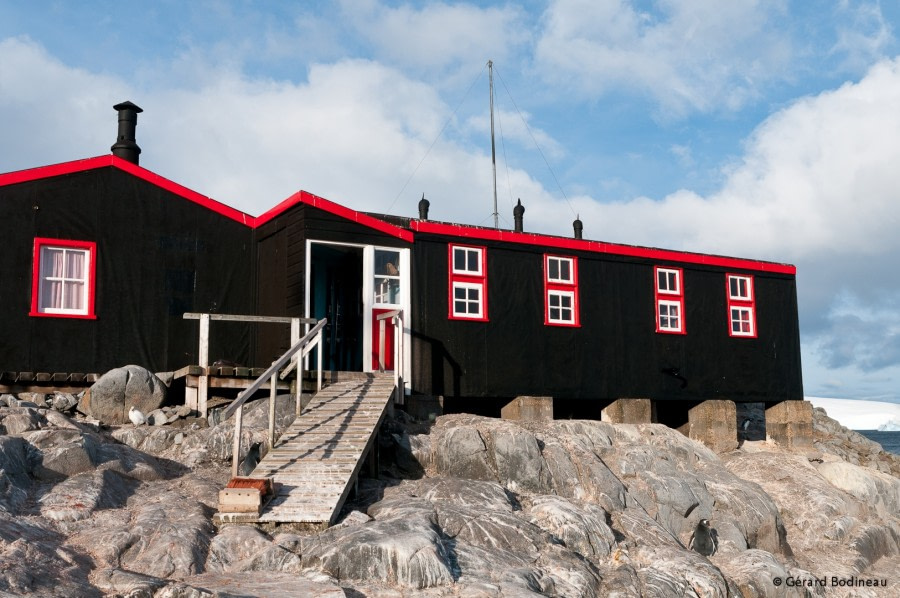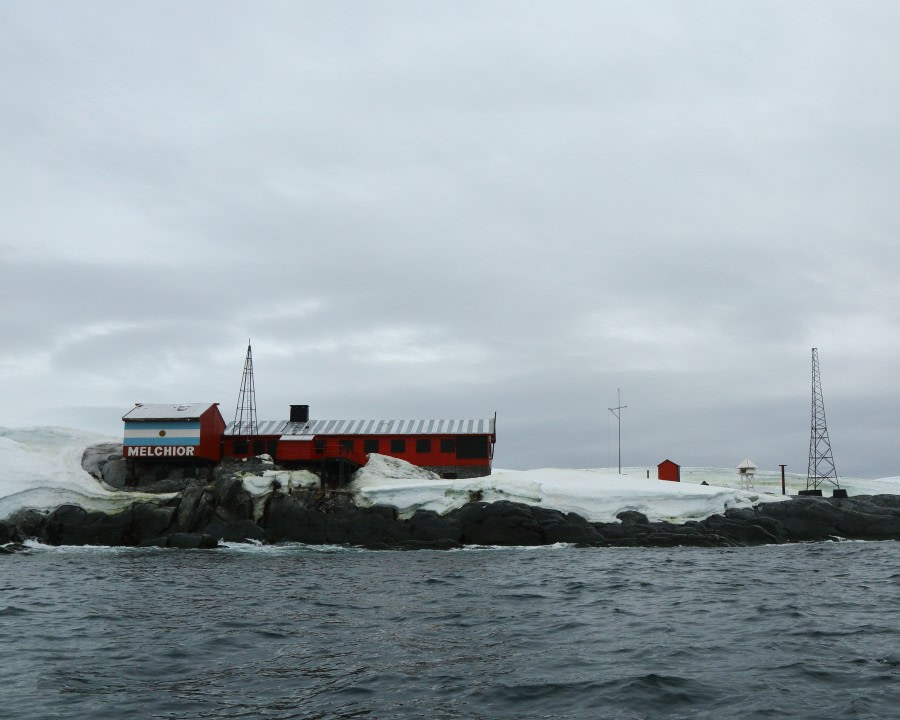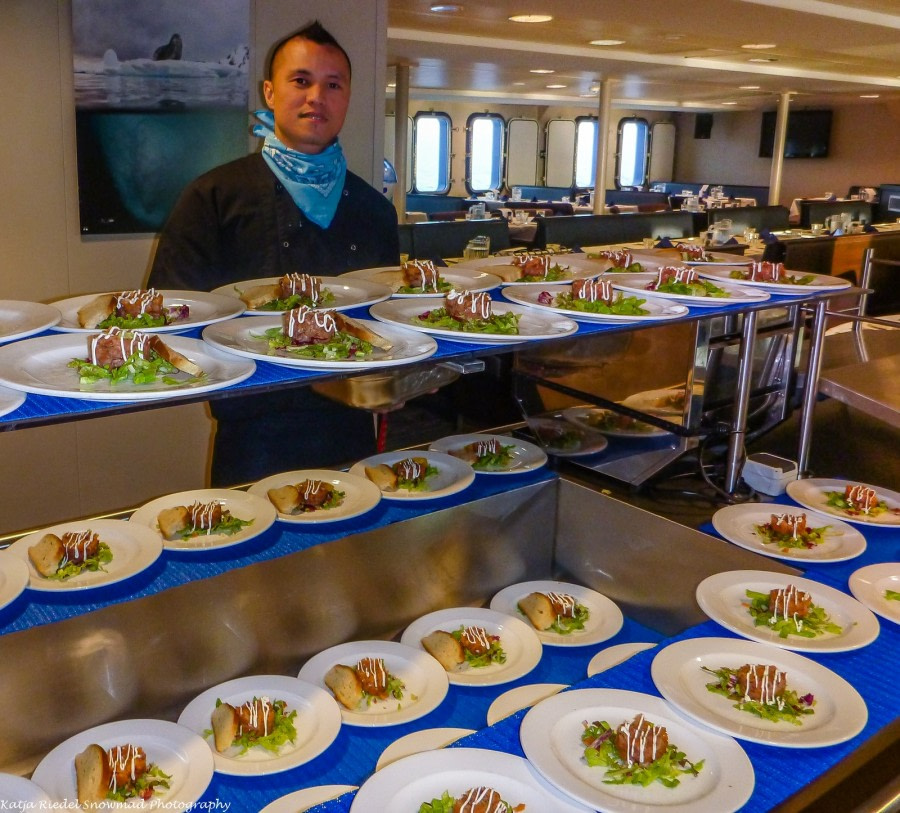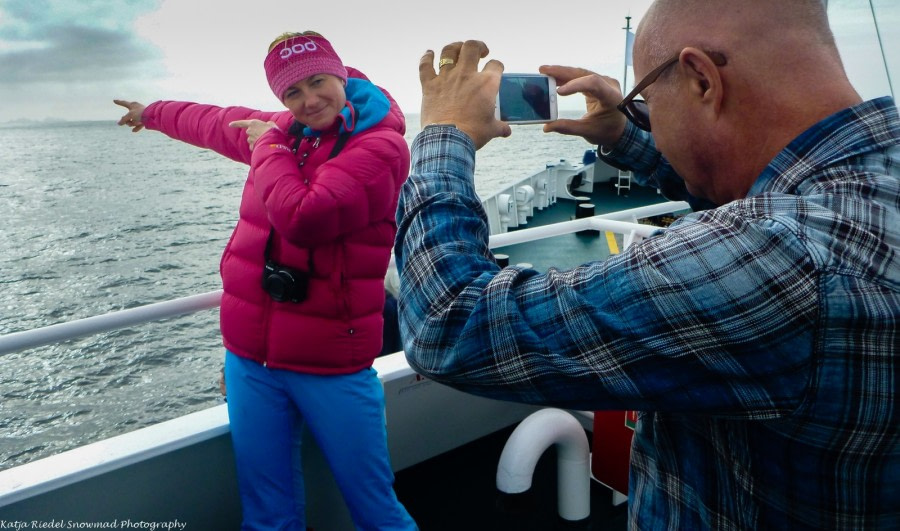| Datum: |
13.03.2017 |
| Positie: |
064°49’ S / 063°30’ W |
| Wind: |
NE3 |
| Weer: |
overcast |
| Luchttemperatuur: |
+4 |
During the night Plancius navigated in the Bismarck Strait and Neumayer Channel before coming back again to Port Lockroy. The weather had improved just enough by the time we arrived at this famous station – the home of Base A, the ‘Penguin Post Office’. We were divided into two groups, the first was shuttled to Port Lockroy, and the second to Jougla Point. The first group was able to look around the Port Lockroy museum and we gave our postcards to Gérard, our temporary postmaster. These will be picked up next season by the Port Lockroy staff and posted on to our friends and families. The rest of us spent time amongst a large colony of Gentoo penguins and taking photos of a large whale skeleton that had been reassembled on the beach in 1974. After an hour it was time to swap landings, a very short ride of a few minutes. We also had the second sighting of a leopard seal eating a penguin only a couple of hundred metres off shore. As the weather improved a bit, our return to Plancius was completed without the drenching of the day before.
During lunch, the captain moved Plancius to Dorian Bay, but he was not able to drop anchor at this small cove as a few icebergs straddled the exact spot he wanted to be. He quickly found another location as the wind had reduced to a breeze. For the afternoon, Beau proposed a long walk on Damoy Point. This area holds a group of small rocky outcrops with large snow patches between. We followed Gérard to the summit of Tombstone Hill, the highest point. Most of the penguins nesting up there had dispersed so we were able to stand very close to the top and we were also surprised and delighted to see three Chinstrap Penguins moulting amongst the Gentoos. After enjoying the scenery for a moment, we continued our walk to the small hut called Damoy close to the shores of Dorian Bay. This former British refuge was used in connection with Base A Port Lockroy, with the nearby snowy ridge serving as a landing strip for small airplanes. The hut is still maintained by the UK Antarctic Heritage Trust as a site of historical importance. On the way to the hut we passed a small outcrop from which we could see the heads of two skua chicks peeking out. We gave them a wide berth as the adult was flying low over our heads to scare us away! After some time spent along the shore, with a lot of brash ice left in this cove, we resumed our walk passing some big icebergs grounded in the bay. We went back to our landing spot while the wind was picking up to 30 knots. The return to Plancius was "wet" as the sea was quite rough.
At 18:00, we were all back on board. Dinner was a special affair: a BBQ on the aft deck. The crew had prepared salads and grilled meat and served it outside. Some benches and tables had also been set up for the ones who wanted to have a real Antarctic dinner. After the meal, the crew played music and started to dance, inviting us to do the same. The evening lasted long in a warm atmosphere even when the actual temperature was close to zero.
Mountaineering
Jabet Peak
Standing over Port Lockroy and Dorian Bay is the beautiful peak of Mt Jabet. This is an often sought after peak – however not that often summited! The late season snow conditions were very good for this climb, which meant that the snow and ice conditions were firm and fast – meaning good crampon conditions – which also meant less room for error. In these conditions Jabet Peak is a true mountaineering objective with everything from pitching on steep ice, glacier travel, crossing bergschrunds, traversing steep exposed ridges and climbing to a definitive summit. Given the nature of the climb it was unfortunate that we were only able to take a very small team given the nature of the climbing conditions
Right from the start it was a challenging climb. As soon as we were ashore it was necessary to climb the shoulder of the glacier on hard blue ice! We did two pitches with crampons and axe using a climbing style known as multi-pitch climbing – mountaineering directly from the sea to the true toe of the glacier!
After this we had a long gentle walk along the glacier ridge, with the saddle to the left of Jabet as our first objective. The view from the saddle was amazing, but the team wanted to go higher, so Massimo and Mal led 3 1/2 pitches across a steep slope to the upper shoulder, using snow stakes and ice screws to make belays. The last section was climbing was on mixed terrain, (over snow, ice and rock). An icy couloir, loose rocks, and a short ridge led to the final steep wall and the summit.
We greeted each other with the word “Bergheil”- this German word, meaning good summit, is the traditional way to say “Congratulations”. We were delighted to have climbed the route as a team, sharing the difficulties together and as we looked out from our lofty height, we could see Plancius, looking very small in the corner of the bay. We returned by another route which was quite easy but a large crevasse needed to be negotiated with care.
Our last steps on Antarctica were across to Damoy Hut, where we visited the simple shelter where British scientists used to stay whilst studying the penguin colony. Finally a short Zodiac cruise brought us back to the ship, and we were sad to say goodbye to the incredible mountains of this almost untouched land!
Kayaking
Once again the team prepared for kayaking but again it was not to be. The wind was not decreasing as hoped and the gusts were too strong. So sadly they had to hand their kayaking equipment back, however, instead of kayaking they had the opportunity to visit Port Lockroy in the morning and Dorian Bay in the afternoon.
Camping
Although we had been hoping to camp tonight, once again the weather gods were not on our side with strong winds, cloudy conditions and even some light rain falling. However, this did mean that everyone was able to participate fully in the barbeque and dancing!
